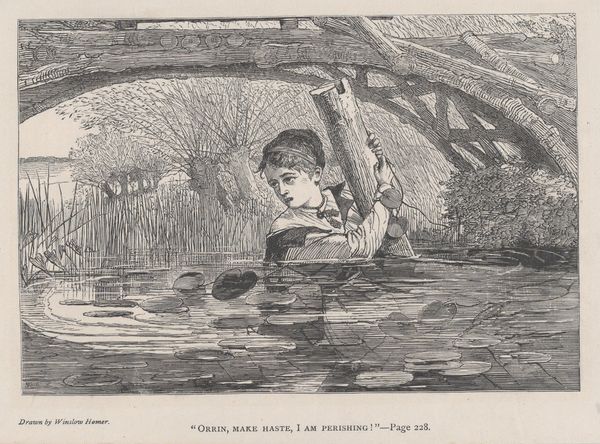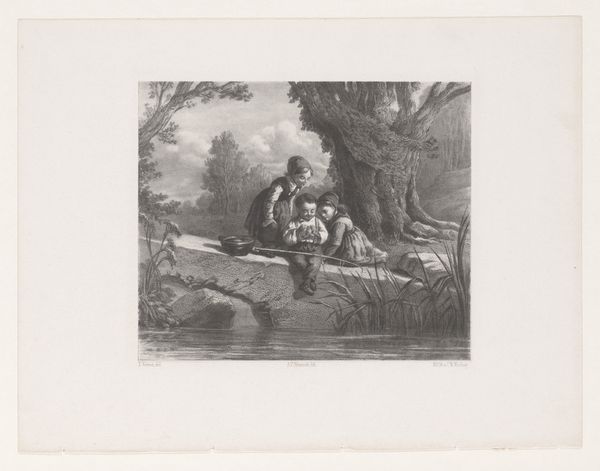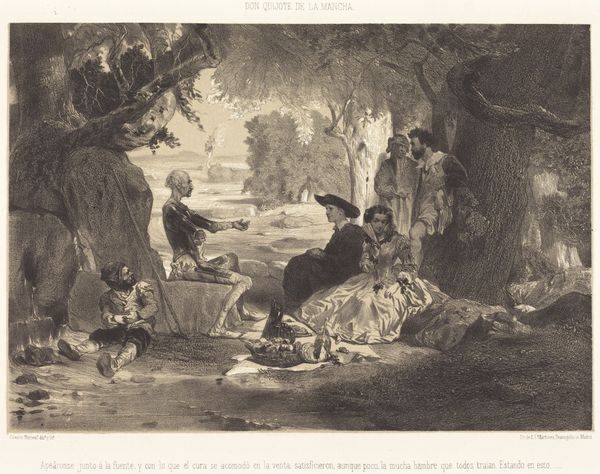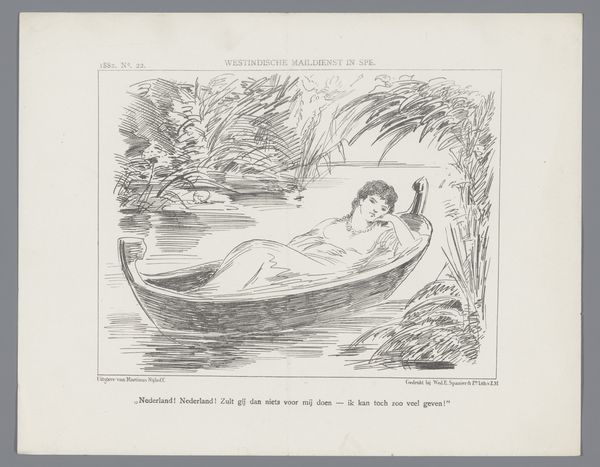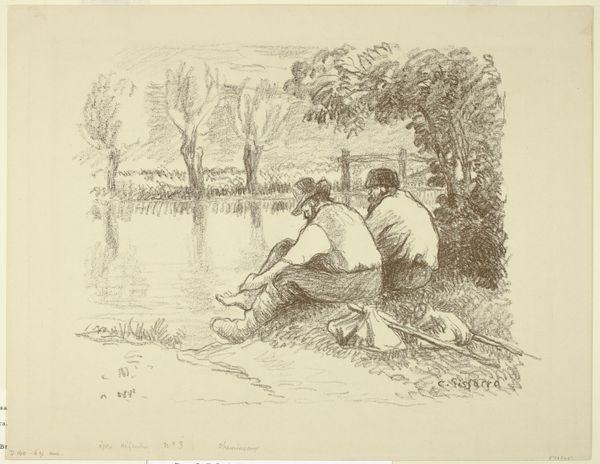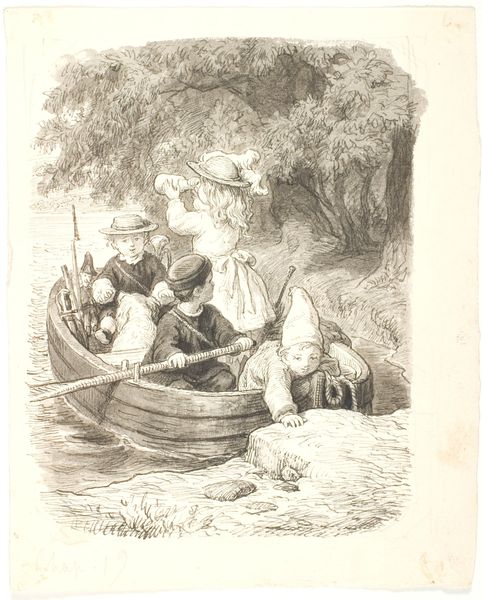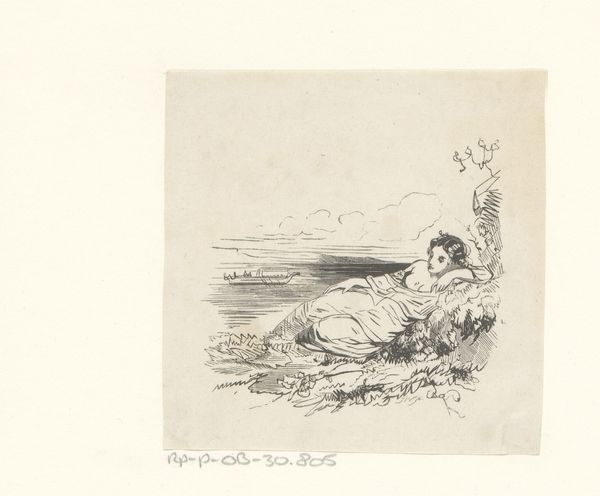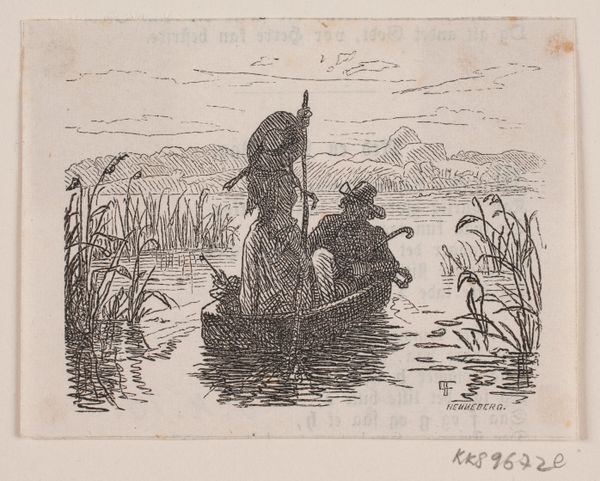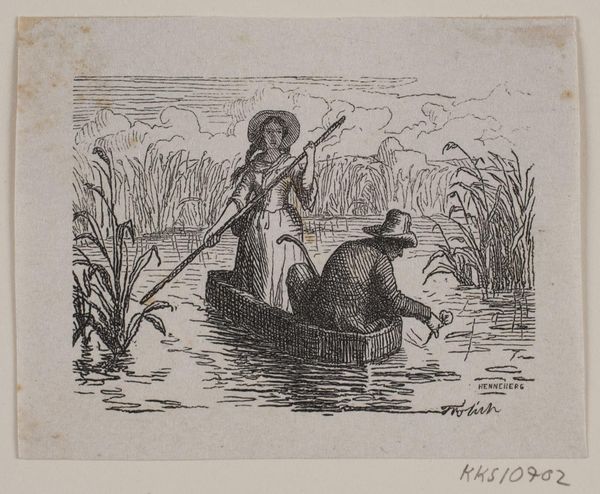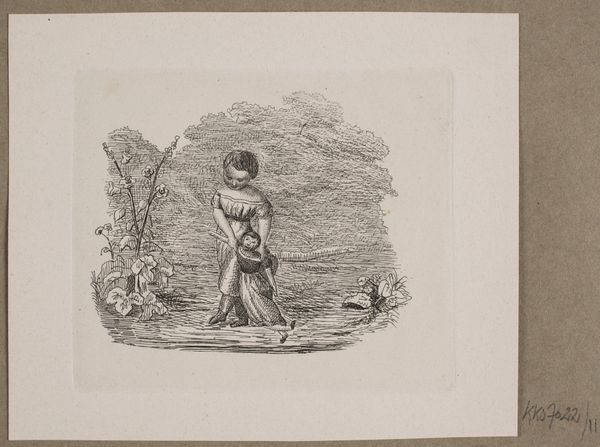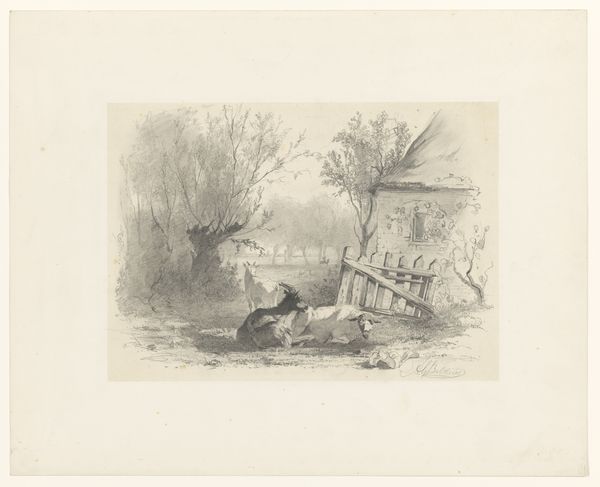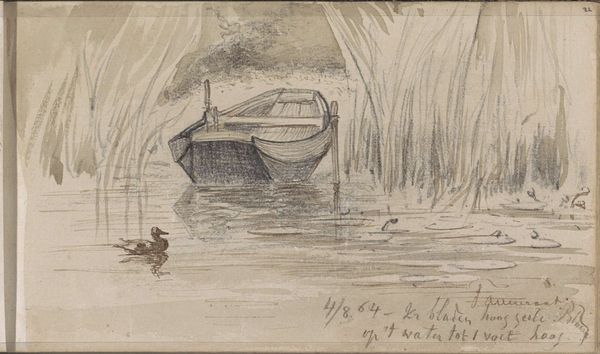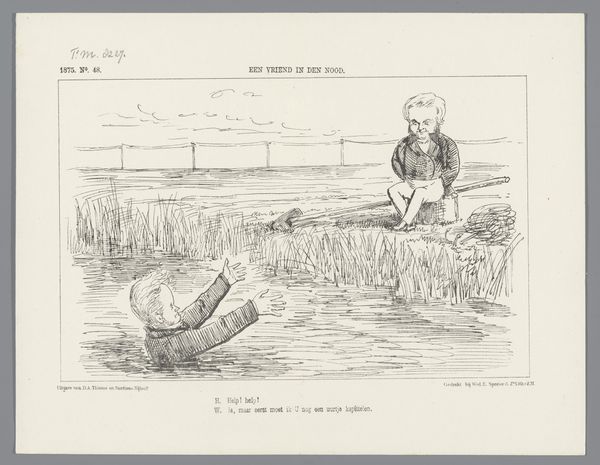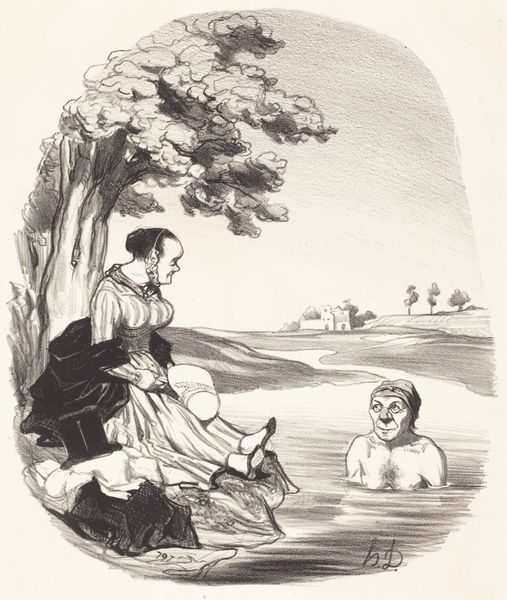
print, woodblock-print, woodcut, engraving
#
portrait
# print
#
impressionism
#
landscape
#
woodblock-print
#
woodcut
#
united-states
#
genre-painting
#
engraving
Dimensions: 4 5/8 x 6 7/8 in. (11.7 x 17.5 cm)
Copyright: Public Domain
Curator: Let's consider Winslow Homer’s wood engraving, "Orrin," from 1868. It depicts a young boy wading through water. What strikes you about it? Editor: Well, the mood is definitely one of peril; he looks worried. I'm also intrigued by the printmaking process itself. Given that this is a wood engraving, how does the materiality influence its interpretation, compared to, say, a painting of a similar scene? Curator: Precisely! This isn't high art displayed in a gilded frame, but a print, likely destined for mass circulation. This tells us something about its intended audience. Who would be consuming these images, and why would they be interested in the scene depicted? Think about the context of the time – the reconstruction era after the Civil War. Editor: So, the engraving technique democratizes the image. Instead of an exclusive, painted artwork for the wealthy, this scene is accessible to a broader public via mass media. Are you saying the choice of wood engraving is part of the social commentary? Curator: Absolutely. Homer chooses a readily available and reproducible medium, aligning himself, in a sense, with the common person. It's also essential to consider the labor involved in producing such a print – the engraver’s skill, the publisher's resources. What kind of narrative does that craft bring to the surface? How does that context affect its market value? Editor: That’s a fantastic point! I hadn't really considered how the medium itself becomes part of the message. It highlights not only subject matter but also production process and accessibility. Curator: Indeed. The seemingly simple image holds layers of social and material commentary once you begin to unpack its production. Editor: This perspective has totally reshaped my understanding. I'll definitely think differently about the materials and social conditions that make art possible.
Comments
No comments
Be the first to comment and join the conversation on the ultimate creative platform.
